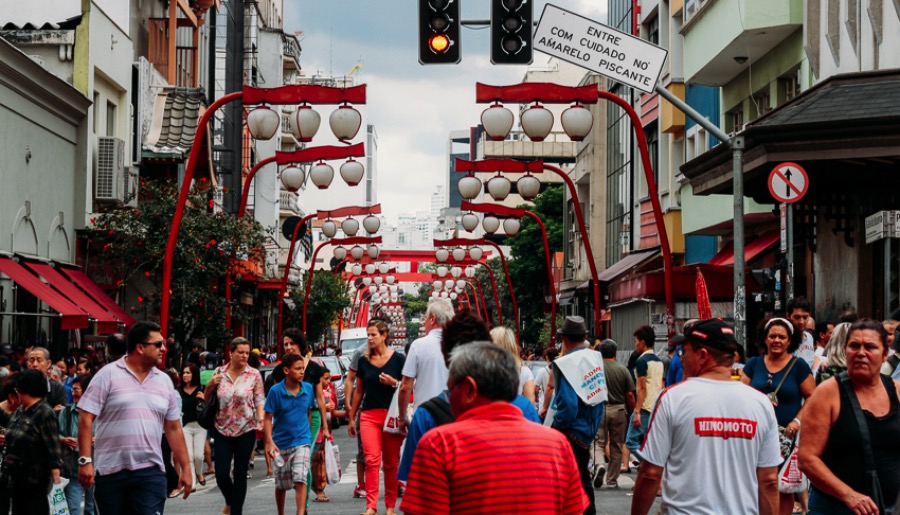Edifício Copan, known in English as the Copan Building, is one of the most important and memorable buildings in São Paulo. Located at Avenida Ipiranga number 200, it was open to the public in 1966, and it’s one of the symbols of modern Brazilian architecture.
The project was first started by Oscar Niemeyer back in 1951 as a way of celebrating 400 years of São Paulo. But the plan was only launched a couple of years later, in 1957. By the time construction was over, only the outside area had followed the design guidelines of Oscar Niemeyer. Everything else was designed by Carlos Lemos who took over the project later.
For me, Edifício Copan was always a magical and weird place. I remember growing up in São Paulo, back in the 1980s, and seeing that unique shape from the window of my family’s car and asking my mother about its name. Years later, I had the pleasure of doing a tour of it with a friend of mine, and the view from up there was more than amazing.
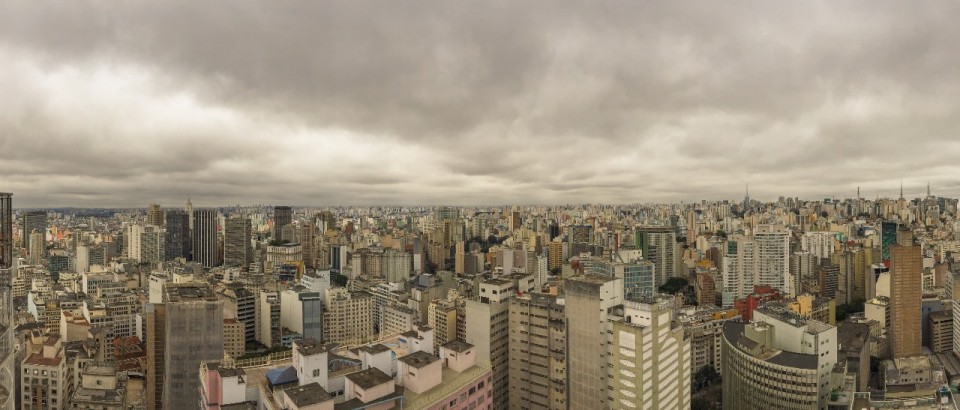
A Little Bit of the History Behind Edifício Copan
São Paulo was a fast-growing city in the 1950s. Factories were everywhere, and cities went through a fast transformation. As development happened, people started coming to the central area of cities and buildings started getting higher and higher.
This growth was the reality of São Paulo at the time when people started thinking about Edifício Copan. São Paulo was on the path to become an international metropolis, and it needed something to show how great it was. Copan was one of the symbols for the economic development and for the upcoming modern Brazilian architecture.
And talking about architecture, Oscar Niemeyer wanted to do something special. He wanted to build something that was unique and didn’t follow the cliches he saw everywhere. This is why he decided to create something with straight angles. Oscar Niemeyer wanted curves that would turn the building into something distinct from the others in the area, and he managed to do this with distinction.
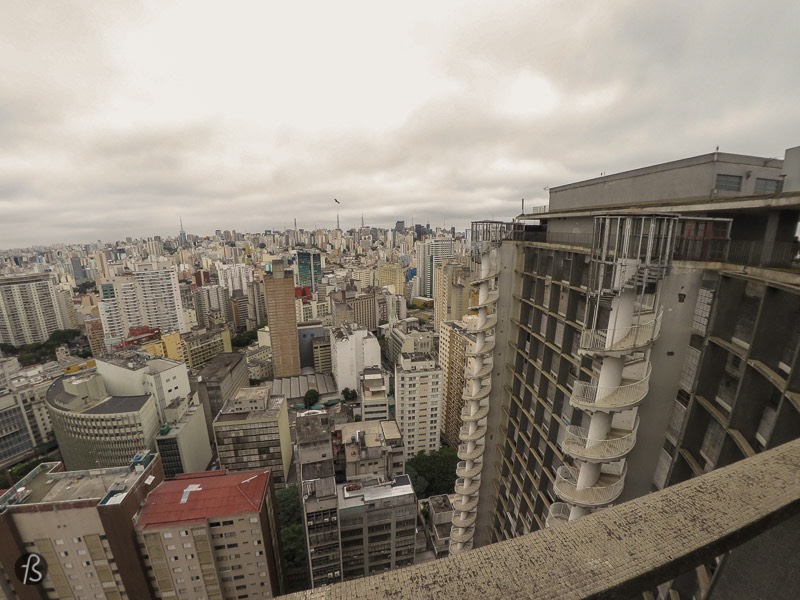

Oscar Niemeyer and the start of Edifício Copan
In 1951, Oscar Niemeyer presented Edifício Copan as one of the critical projects for the 400 years of São Paulo. The idea came from the Rockefeller Center in New York, and the goal was to design something that would mix offices and houses.
At the beginning of the project, PanAm was the primary source of money for the construction, but a lot of financial issues made the company change its mind. It was only in 1957 that construction work started and it just happened because another bank took responsibility and decided to finish the project.
But all the money issues at the beginning of the project made Oscar Niemeyer leave it with Carlos Lemos. He took over the construction of Brasília, but his design survived in the external area as the symbol of a modern São Paulo.
The name Copan comes from Companhia Pan-Americana de Hotéis e Turismo, Portuguese for Pan-American Hotels and Tourism Company, and this is the name of the original project. This project included a hotel that would be even larger than the curvaceous building that is famous today. This hotel would be connected to the main building by a slab that would hold a restaurant and pool. But nothing like this ever happened.
A few years after construction was over, things changed in Brazil, and the central area of São Paulo started to decline, and most people left the building. For a while, the building was considered by many as a vertical ghetto. Only in the 1990s did Edifício Copan attract a different crowd.
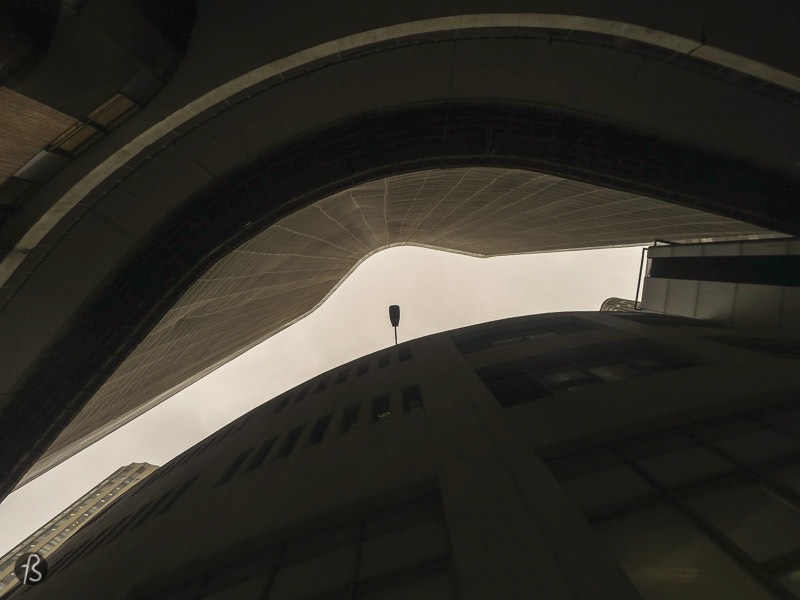


Something more about Edifício Copan
Edifício Copan is located at Ipiranga Avenue, number 200. The facade is more than 45 thousand square meters, and 22 lifts try to help the 5 thousand people that live in the building move around. More than a hundred people are working to keep it running!
My favorite part of the building is the crazy-looking emergency stairs that stand high above the city. From there, it’s easy to feel vertigo but it’s more than worth it since the pictures from it are incredible. Also, the view from the top floor shows a city that doesn’t feel like it has an end. Something that most people living in Europe will find more than interesting.
This symbol of modern Brazilian architecture is 115 meters high and has more than 120 thousand square meters of built area. With its curves, the design created by Oscar Niemeyer left the patterns used in North America and Europe and was one of the first buildings that expressed Brazilian culture.
The architect designed the building in a way that transformed and changed the surrounding area. He wanted to search for function and rationality and developed Edifício Copan in a way to integrate it into the landscape and the surroundings.
And the building is so cool that you can use in the 2013 version of SimCity!
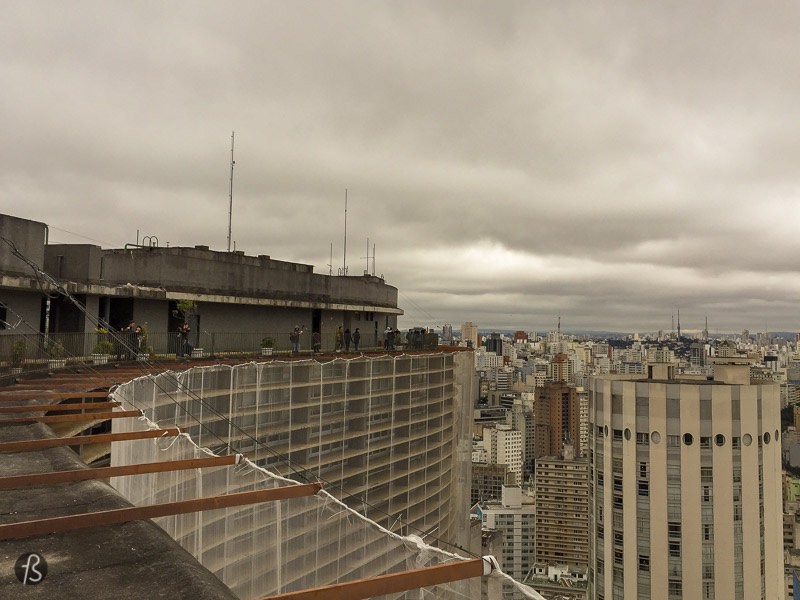
I visited Edifício Copan with my friend André, from Viagem Criativa, back in July 2017. He does tours of São Paulo’s central area, and I can say that he is fantastic in what he does and how much he knows about the city. If you want to do a tour with him and learn more about Copan and São Paulo, you need to click here!
If you want to visit Edifício Copan by yourself, you must be there a little before the opening time. The hours for a visit allowed are from 10:00 to 10:30 and from 15:00 to 15:30. If you want to learn more about it, click on the link below!
Edifício Copan: Oscar Niemeyer and the Modern Brazilian Architecture
Av. Ipiranga, 200 – Centro
São Paulo – Brazil

